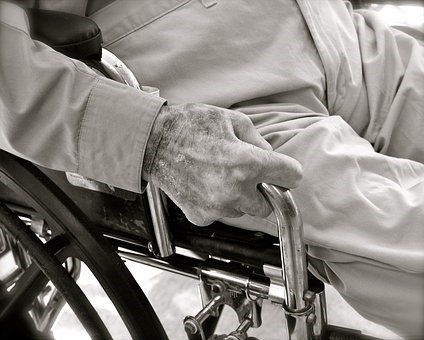Last year St. Albert-based Stop Abuse in Families (SAiF) Society helped over 200 seniors experiencing abuse, but that number is shaping up to be even higher in 2024, and the cases that the organization sees are becoming more complex, according to executive director Mark Dixon.
More seniors experiencing numerous types of abuse simultaneously are using SAiF’s services.
“Our staff are spending more time following up and advocating for our clients,” Dixon said.
Dixon could not pinpoint a reason for the change, but he said the additional work could reduce the time available for SAiF to support other clients.
“We’re doing everything we can to avoid that,” he said.
There isn’t a specific type of abuse that is most common with seniors, as it “depends on the community and the situation,” Dixon said.
But seniors are susceptible to the same physical, sexual, financial, emotional, mental, digital and medical abuse as other demographics.
An example case of abuse could look like an unemployed adult child who gets physically violent or aggressive when denied money.
“There are scenarios where a senior is in their own home, the adult child is living with them, and … the child has all the power,” Dixon said. “[The child is] controlling where the money goes, who gets to use the car, even potentially holding back medication just as a punishment.”
About one in 10 seniors is being abused, according to the Alberta Elder Abuse Awareness Council.
“This number is likely low, as not every senior who is being abused feels comfortable or safe to reach out,” Dixon said.
Dixon said to look for abuse warning signs, for example that an individual is depressed, confused or withdrawn, or has become isolated from friends and family. Physical markers, such as unexplained bruises, burns or scars, a dirty appearance, signs of dehydration or signs that an individual is over or undermedicated can also indicate abuse.
If retired or unemployed, seniors may be isolated from potential support networks, and they are sometimes unaware that they are being victimized.
And getting access to an abused senior can be difficult, especially if the individual dependent on family or workers to meet their needs, doesn’t leave the house or can’t use the internet or a telephone to seek help.
“Reach out to those in need if you can,” Dixon said. “Tell them you’re here for them. Where appropriate, report it to SAiF, RCMP or another organization providing seniors’ supports in the community. Inform yourself – take advantage of one of the many educational programs on the topic provide by SAiF, FCSS and other organizations.”
SAiF also offers support to perpetrators of abuse. The goal is to help perpetrators understand what healthy relationships look like, Dixon said.
This week is seniors’ week — a time to celebrate the Alberta’s seniors and their contributions to the province.




